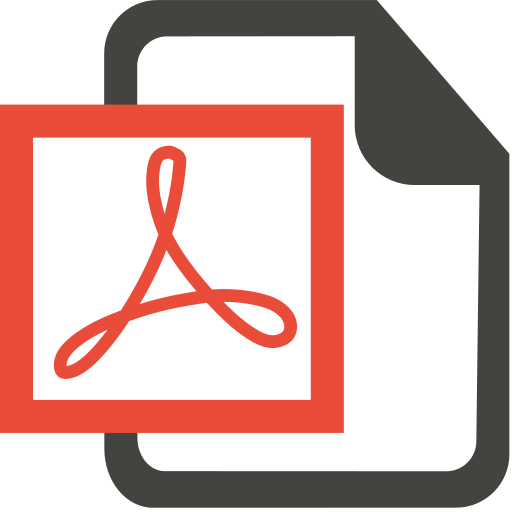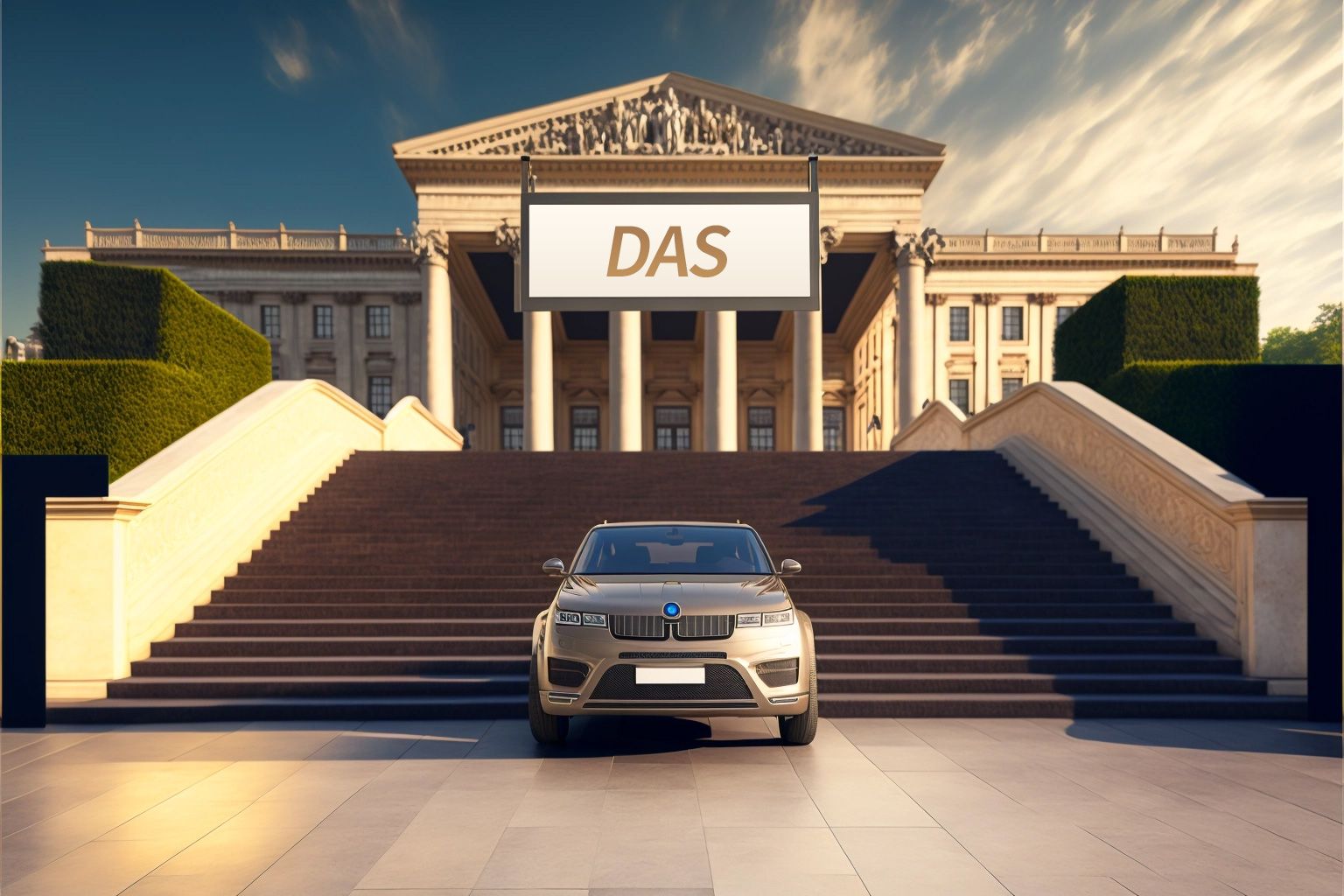Full Episode Audio (download link is to the right of the volume icon)
Listening Comp. Audio (download link is to the right of the volume icon)
Welcome to Lesson #10 of Stress Free German. Let’s start with a new image. It has four elements, all neuter. So try to envision a shiny new automobile parked in front of a restaurant. Because the restaurant has outdoor seating, you can also think of it as a cafe. On the right side of the image, there’s a bicycle. That’s it. Those are our four neuter nouns: car, bicycle, restaurant, cafe. Listen…
Auto, Fahrrad, Restaurant, Café
One more time, repeat after our native speaker.
Auto, Fahrrad, Restaurant, Café
Three are obvious cognates, but what was that second word? The one for bike?
Fahrrad
That breaks down literally as ride-wheel, which makes sense. Fahrrad
Anyway, let’s repeat them using the neuter article Das.
The car is big.
Das Auto ist groß.
The bike is new.
Das Fahrrad ist neu.
The restaurant is old.
Das Restaurant ist alt.
The cafe is old.
Das Café ist alt.
How about: This is my new car.
Das ist mein neues Auto.
This is my old bike.
Das ist mein altes Fahrrad.
Next let’s do some review. You’re staying in a hotel in Berlin that has a restaurant. Let’s say your last name is Kirchner. How will the manager greet you?
Guten Morgen, Frau Kirchner.
..or…
Guten Morgen, Herr Kirchner.
When you arrive at lunch time, let’s greet him first.
Guten Tag.
Guten Tag, Frau Kirschner.
And at dinner?
Guten Abend.
As you walk to your table, you see a friend. How does our greeting between friends go?
Hallo, wie geht’s dir?
Danke, gut und dir?
You two chit-chat in German and then your friend stands up and gestures to his suitcase.
I’m going to Vienna.
Ich gehe nach Wien.
And I’m going to Innsbruck.
Und ich gehe nach Innsbruck.
As the manager heads out the door, you overhear him say: I’m going home
Ich gehe nach Hause.
(music)
Let’s do one more neuter image today. So, imagine a museum–the kind you see in New York or London–with a row of columns, and statues on top. At the base of the museum steps is a car. And over the museum entrance hangs a sign that reads DAS. So only three elements: museum, car, sign
Museum, Auto, Schild
The presence of the neuter word, Auto, reminds us that museum and sign are also neuter. As the speaker says each word, please envision that element of our image. Ready?
Museum, Auto, Schild
When you learn a new word you want to go right to using it. So try to say…
The museum is old.
Das Museum ist alt.
The car is new.
Das Auto ist neu.
The sign is big.
Das Schild ist groß.
This word, Schild, is also the word for shield in German. It sure sounds like it. But oddly, when it means a shield, then it’s masculine. And what’s awesome, guys, is that your grammar is so strong, you’ll be able to spot which is which. Here. Listen…
Superman hat einen Schild.
versus
Superman hat ein Schild.
Superman hat einen Schild. means Superman has a shield. Something he holds up to protect himself. We know that, because the supporting word “ein” changed to “einen.” Whereas…Superman hat ein Schild. Now Superman has his own sign. Maybe he’s opening a store. There is a real correlation between shields and signs, by the way. Think back to medieval times, where craftsmen wrote the name of their shop on a shield and hung it over their door.
Anyway, to practice these a little more, let’s learn a new adjective. So, you’re hanging out in a dog park and you see first a ginormous Great Dane …and then a tiny chihuahua. Listen…
(big dog bark) Der Hund ist groß.
(tiny dog bark)
Der Hund ist klein.
Say just: Big and small.
groß und klein
The car is big.
Das Auto ist groß.
The bike is small.
Das Fahrrad ist klein.
How about: The museum is new.
Das Museum ist neu.
The sign is old.
Das Schild ist alt.
The cafe is beautiful.
Das Café ist schön.
How about this one: I see a small tree.
Ich sehe einen kleinen Baum.
einen kleinen…right? Because of this (fist / palm)…we’re doing something to the masculine tree.
I see a small sign.
Ich sehe ein kleines Schild.
I see a small church.
Ich sehe eine kleine Kirche.
Excellent guys. Alright…
TIP OF THE DAY
Today’s tip is for those who are also using other sources along with this course. It’s more of a warning, I suppose: Avoid courses which try to jam all seven conjugations of a new verb into your mouth all at once. That’s lazy teaching. It’s not even teaching. It’s just a thoughtless info-dump. Like, Here you go! I hope you can absorb six months of training in one sitting. Something as complex as verb conjugations really takes time to sink in.
And it’s not just courses. Do a search for “German verbs” and you’ll find yourself scrolling through page after page of conjugation tables. Not only is it lazy on their part, it’s actually harmful. Because staring at that flood of verb charts…it’s overwhelming. And it makes some people feel like maybe they shouldn’t be trying to learn this language. And that’s not cool. You can absolutely learn German. You already are. But verbs especially need to be handled with care. A conjugation here, a tense there. Because trying to memorize endless declension charts and conjugation tables…it’s like running around in circles: You spend a lot of energy but end up nowhere. Want to learn things a new way, without stress? Then keep doing what we’re doing here, taking measured, meaningful steps forward, day after day, towards your goal. A conjugation here, a tense there.
Speaking of verbs, let’s do it the right way. Let’s add just one new conjugation today. So, imagine you come back to the apartment and see your friends heading out. They each have one of those refillable popcorn buckets in one hand, and a movie ticket in the other. Before you can even ask, one of them tells you…
Wir gehen ins Kino.
Hmm. I think I understood that. Let’s look at that last word, Kino . If we take the English word Cinema, and change the C to a K….kinema…kine…gives us…Kino. means…The movies.
So Lisa shows you her movie ticket, and says again…
Wir gehen ins Kino.
We’re going to the movies.
There’s our new conjugation. We are going. Wir gehen
Try to say: We’re going to Hamburg.
Wir gehen nach Hamburg.
But hold on. Why is it ins with the movies, and nach to Hamburg? It’s because the prepositions “nach” and “in” are used with different types of destinations.
We use “nach” to express movement towards a city, or some large destination that’s considered a point on a map. On the other hand, the preposition “in” is used to express movement towards an enclosed space or a place you can enter. We say “ins” here because it’s a contraction of “in das.”
Mind you, there are other prepositions that are used to express movement towards a location.
Zu, for example. But we’re going to learn them gradually. Anyway, how would you ask your friend: Are you going to the movies?
Gehst du ins Kino?
We’re going to the museum.
Wir gehen ins Museum.
Again, he said “ins” because he is contracting the two words in and das
I’m going to a cafe.
Ich gehe ins Café.
He is going to a restaurant.
Er geht ins Restaurant.
Cafe and Restaurant are both neuter, so they too get in and das contracted together: In plus das…ins
So…hmm. Ich gehe, wir gehen. I’m going. We’re going. So how would you say…
I see. We see.
Ich sehe. Wir sehen.
Try to say:
I see your brother.
Ich sehe deinen Bruder.
We see your Papa.
Wir sehen deinen Papa.
How about this: I have. We have.
Ich habe. Wir haben.
I have a small bag.
Ich habe eine kleine Tasche.
We have a big suitcase.
Wir haben einen großen Koffer.
I need. We need.
Ich brauche. Wir brauchen.
I need a bicycle.
Ich brauche ein Fahrrad.
We need a refrigerator.
Wir brauchen einen Kühlschrank.
With all of these, it’s best to keep a finger on the pause button. Don’t let me rush you by giving just a few seconds to think. Take your time, aply the right pattern, then compare your answer to the native speaker’s. Ok, a quick breather…
(music)
Ask a friend: Are you going to the museum?
Gehst du ins Museum?
We’re going to the movies.
Wir gehen ins Kino.
Ask a friend: Are you going to Berlin?
Gehst du nach Berlin?
We’re going to Salzburg.
Wir gehen nach Salzburg.
In (das) for indoor locations, nach for points on a map.
I’m going to a restaurant.
Ich gehe ins Restaurant.
My brother is going to a cafe.
Mein Bruder geht ins Café.
And let’s try using our new verb conjugation, the “we” form, with a few other verbs we’re comfortable with. For example…
I’m looking for. We’re looking for.
Ich suche. Wir suchen.
I’m looking for a big bicycle.
Ich suche ein großes Fahrrad.
We’re looking for a small sign.
Wir suchen ein kleines Schild.
I love. We love.
Ich liebe. Wir lieben.
I love the museum.
Ich liebe das Museum.
We love the dog.
Wir lieben den Hund.
Alright, say it with me guys. If we are getting most of these right, we are doing incredibly well.
Keep practicing, and see you next time. Tschuss!
Lesson PDF Download – Right click on PDF Icon – Save Link As…



Thank you l learnt a lot today and l am improving bit by bit how you have exams in future
So glad to hear it, Nyasha! Glad you’re enjoying the course, and I look forward to welcoming you to Volumes II, III, IV….
Vielen dank, Mark! I took German in high school but never understood the conjugation, cases, and endings…until now! You teach in a way that makes so much sense and I’m very grateful. A friend told me about your program when I shared my current goal to become fluent. I will definitely carry on to the next volumes.
Hi Grace!
Thanks so much for the kind words in your comment about SFG. So glad you’re enjoying the course, and I look forward to welcoming you to Volumes II, III, IV….
I am loving this!!! Thank you!!
Love the enthusiasm, Tanya! Let us know how you do on the final exam (Lesson 20)!